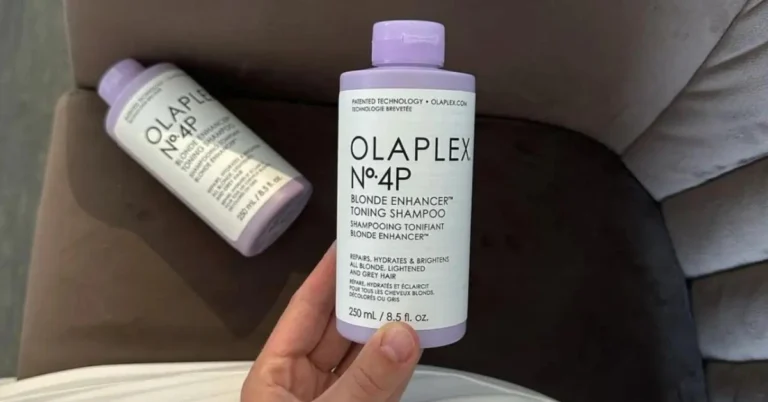Does Salicylic Acid Help With Acne Scars? Acne scars are a common concern for many people, as they can leave behind unsightly marks and discoloration on the skin. While there are various treatments available to help reduce the appearance of acne scars, one that has gained a lot of attention in recent years is salicylic acid. Salicylic acid is a type of beta hydroxy acid that is derived from willow bark and is often used as an acne treatment. It is known to exfoliate the skin and unclog pores, but does it also help with acne scars?
In this article, we will take a closer look at the current understanding of salicylic acid as a treatment for acne scars, including how it works, the research that has been conducted, and how to safely and effectively use it.
Table of Contents
How Salicylic Acid Works?
Salicylic acid is a type of beta hydroxy acid (BHA) that is derived from willow bark. It is a common ingredient in over-the-counter acne treatments and is known for its ability to exfoliate the skin and unclog pores.
Salicylic acid works by penetrating the pores and breaking down the buildup of dead skin cells and oil. This helps to unclog pores and prevent the formation of acne. As a result of this, it also helps to reduce the appearance of existing acne scars.
Salicylic acid also has anti-inflammatory properties which help to reduce redness and inflammation associated with acne. It can also stimulate the production of collagen and glycosaminoglycans, which are essential components of healthy skin and can aid in the healing of acne scars.
Additionally, salicylic acid can help to regulate the skin’s natural exfoliation process. This helps to prevent the buildup of dead skin cells that can clog pores and lead to acne. It also helps to improve the overall texture and tone of the skin, which can reduce the appearance of acne scars.
It is important to note that salicylic acid can be drying to the skin, so it should be used in moderation and with a proper moisturizer. And please also always use sunscreen when using salicylic acid as it can make your skin more sensitive to the sun.
Does Salicylic Acid Help With Acne Scars? Studies and Research
Research on the effectiveness of salicylic acid for treating acne scars is still ongoing, but there are a number of studies that have been conducted to investigate its potential benefits.
One study published in the Journal of Clinical and Aesthetic Dermatology found that a 2% salicylic acid peel was effective in reducing the appearance of acne scars. The study involved 40 patients with moderate to severe acne scars who underwent three salicylic acid peels at two-week intervals. The results showed that the 2% salicylic acid peel led to a significant improvement in the appearance of acne scars, with 80% of patients reporting a visible reduction in scarring.
Another study published in the Journal of Cutaneous and Aesthetic Surgery found that a combination of salicylic acid and lactic acid peels was effective in treating acne scars. The study involved 20 patients with moderate to severe acne scars who underwent four peels at four-week intervals. The results showed that the combination of salicylic and lactic acid peels led to a significant improvement in the appearance of acne scars, with 70% of patients reporting a visible reduction in scarring.
However, keep in mind that these studies had a small sample size, and further research is needed to confirm the effectiveness of salicylic acid in treating acne scars. Additionally, it is important to remember that different individuals may have different results.
It is also worth mentioning that salicylic acid can be effective in preventing acne scars by keeping the pores clear, reducing inflammation and promoting the healing of the skin.
How to Use Salicylic Acid for Acne Scars

When using salicylic acid for acne scars, it is important that you use it in the appropriate concentration and frequency.
I would recommend you to use a product with a concentration of 0.5% to 2% salicylic acid. Higher concentrations may cause skin irritation. It is also important to use a product that is formulated for the face, as the skin on the face is more delicate than the skin on the body.
Also use salicylic acid once a day maximum, depending on the severity of the scars and the sensitivity of your skin and use it after cleansing the skin and before moisturizing. Basically, I would still prefer you to use it less – say only 2-3 times a week. Too much exfoliation can irritate the skin and also damage the natural skin barrier.
And instead of combining it with other active ingredients on the same day, or other exfoliating acids in general, use it with gentle ingredients like niacinamide.
Also, be aware that with such actives it may well come to initial worsening, the so-called purging, and it only gets better afterward. As a rule, however, this should not last longer than a maximum of 3 months. So do not give up immediately if your skin deteriorates, but be patient.
How long does salicylic acid take to work on acne scars?
The length of time it takes for salicylic acid to work on acne scars can vary depending on the severity of the scars and the individual’s skin type. It’s important to have realistic expectations, as it may take several weeks or even months for the improvement to be visible.
In general, mild acne scars may improve within 4-6 weeks of regular use of salicylic acid, while more severe scars may take longer. It is also important to note that salicylic acid is not a cure for acne scars and it may not completely remove the scars, but it can help to reduce their appearance.
Does salicylic acid remove dark spots?
Salicylic acid can help to brighten the skin and even out the skin tone, but it may not completely remove dark spots.
Can too much salicylic acid make acne worse?

Using too much salicylic acid or using it too frequently can potentially make acne worse. Salicylic acid is a type of beta hydroxy acid that is used as an acne treatment to exfoliate the skin, unclog pores and reduce the appearance of existing acne. But when used in excess, it can cause irritation, dryness, and redness of the skin, leading to an overproduction of oil which can cause new breakouts.
The recommended concentration of salicylic acid for acne treatment is between 0.5% to 2%. It’s important to follow the instructions on the product and not exceed the recommended usage. It is also important to use a moisturizer to prevent the skin from becoming too dry.
What cures acne scars?
- Microneedling: This is a procedure that involves using a device with small needles to create microscopic punctures in the skin. This stimulates the production of collagen and elastin, which can help to improve the appearance of acne scars.
- Chemical Peels: This treatment involves applying an acid solution to the skin, which causes the top layer of skin to peel off, revealing new, smoother skin. Chemical peels, such as salicylic acid and glycolic acid peels, can help to improve the appearance of acne scars by exfoliating the skin and promoting cell turnover.
- Laser Resurfacing: This treatment uses laser energy to remove the top layer of damaged skin and stimulate the production of collagen and elastin. This can help to improve the appearance of acne scars and smooth out the skin’s texture.
- Dermabrasion: This treatment involves using a special tool to manually remove the top layer of damaged skin, which can help to smooth out the skin’s texture and reduce the appearance of acne scars.
- Topical Creams: Topical creams, such as retinoids, hydroquinone, kojic acid, and azelaic acid can help to lighten dark spots caused by acne and reduce redness.
Which is better for acne scars niacinamide or salicylic acid?
Both niacinamide and salicylic acid have been shown to be effective in improving the appearance of acne scars, but they work in slightly different ways.
Niacinamide is a form of vitamin B3 that is known for its ability to reduce inflammation and improve the appearance of acne-prone skin. It can help to reduce the redness and hyperpigmentation caused by acne, and it can also help to strengthen the skin’s barrier, which can prevent further breakouts.
In general, salicylic acid is more effective in unclogging pores and preventing new breakouts, while niacinamide is more effective in reducing redness and hyperpigmentation caused by acne. They can be used together as part of a skincare routine, as they target different concerns.
How long do acne marks take to fade?
Mild acne marks, such as post-inflammatory erythema (PIE), or red marks, may fade within a few weeks to a few months with the use of a consistent skincare routine that includes the use of sunscreen, a gentle cleanser, and moisturizer.
Dark spots, or post-inflammatory hyperpigmentation (PIH), usually take longer to fade, it may take several months to a year for these marks to fully fade, especially in darker skin types. The use of topical creams that contain hydroquinone, kojic acid, or azelaic acid, along with sun protection, can help speed up the fading process.
Deep, pitted scars may take longer to fade, sometimes several months to a year, or even longer. These types of scars may require more aggressive treatment such as microneedling, laser resurfacing, or chemical peels.
If the article “Can Salicylic Acid Be Effective Against Acne Scars?” resonated with you, we encourage you to leave a comment below and share your personal experience with Salicylic Acid.




